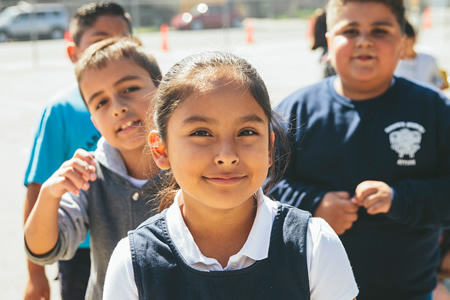 A recent blog post – Teacher End-of-Year Planning Using MAP Growth Data – discussed some questions that often arise as the year draws to a close.
A recent blog post – Teacher End-of-Year Planning Using MAP Growth Data – discussed some questions that often arise as the year draws to a close.
- Were my efforts to support student growth this year successful?
- Does the data highlight any opportunities to celebrate success?
- What can the data tell me about how to maintain or improve successes next year?
Students and parents often have these same questions in mind as the year ends. So, when reflecting and reviewing student performance over the school year, it’s important to engage both the student and their family in the discussion. In many cases, the most common opportunity to do this is at end-of-year parent-teacher conferences, or through a year-end summary letter (or email) to parents.
One great place to start the dialogue is with the MAP® Growth™ Student Profile report. The Student Profile report shows how the student did compared to national norms and projected proficiency on state summative tests—and it also highlights the instructional areas that represent the greatest opportunities for each student, so they can set and track growth goals going forward. For students and families interested in working toward growth goals over the summer, it provides specific instructional areas the student is ready for.
 Some school districts also use the Achievement Status and Growth report. This report provides an at-a-glance view using a quadrant diagram and shows the student’s growth summary alongside their growth projections in a given subject. It’s an easy way to reflect how much the student actually grew, and how that growth compares to our national norms.
Some school districts also use the Achievement Status and Growth report. This report provides an at-a-glance view using a quadrant diagram and shows the student’s growth summary alongside their growth projections in a given subject. It’s an easy way to reflect how much the student actually grew, and how that growth compares to our national norms.
Celebrating student success is fundamental to keeping them engaged with their own growth. When you show them all of the progress they’re making, students have the opportunity to be proud, and you give them agency in their own growth. When kids are involved in setting their own goals, they’re more likely to meet them, and it holds them accountable while letting them know their hard work will be acknowledged.
Celebrating success and growth also helps students establish the connection between their efforts and the outcomes. The more they challenge themselves, the more they grow—and every student is capable of growth. Consider how powerful it is to reinforce that messaging with students: teachers and families collectively supporting the student’s demonstrated growth and reinforcing the positive outcomes of their efforts. Be sure to celebrate both growth, and achievement.
Teachers should involve students and their parents as part of their year-end reflection and MAP Growth assessment data can play a pivotal role. For a closer look at how to have data-informed conversations with students and families, view our recently recorded on-demand webinar “3 Must-do’s for year-end review.”